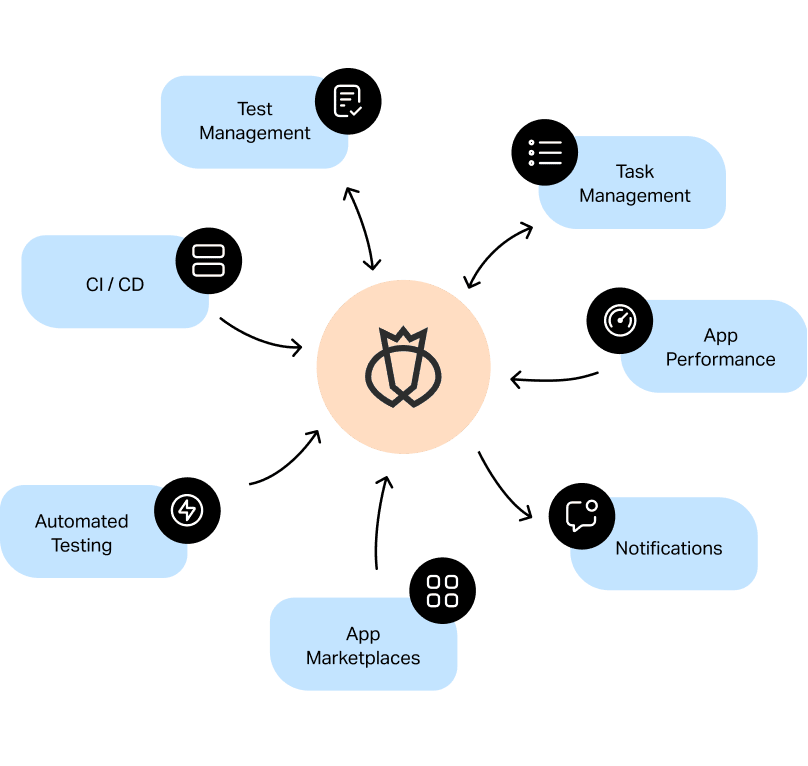From Guidebook to Automated Screening: A Comprehensive Overview to Transitioning Efficiently and Successfully
In the world of software application testing, the shift from guidebook to automated processes has come to be a progressively vital transition for companies looking for to enhance performance and accuracy in their screening methods. The journey from handbook to automated testing is not without its difficulties, but when come close to strategically and with a clear strategy in mind, the advantages can be substantial.
Advantages of Automated Evaluating
Automated screening offers various benefits, boosting performance and accuracy in software application growth processes. Automated tests can be run at the same time on several tools and running systems, considerably speeding up the screening stage contrasted to hands-on testing.
Furthermore, automated testing makes sure a greater degree of precision in detecting defects. Considering that automated examinations adhere to predefined manuscripts, human mistake is decreased, leading to more dependable test results. Uniformity in screening is additionally improved, as automated tests execute the same actions specifically each time they are run. This uniformity is crucial in ensuring that all capabilities of the software program are extensively checked, reducing the chance of unseen pests sliding through to production.
Choosing the Right Devices

To start with, analyze your purposes and demands. Comprehend the range of your project, the technologies involved, and the capability of your group. This evaluation will certainly assist you figure out the attributes and abilities you need in your testing tools.
Second of all, take into consideration the compatibility of the devices with your existing systems and procedures. Seamless combination with your current software development lifecycle is important to ensure a smooth change to automation.
Furthermore, assess the scalability and versatility of the tools. As your testing requires progress, the tools need to have the ability to adapt and suit modifications successfully.
Lastly, consider the assistance and neighborhood around the devices. When carrying out automated screening, durable support and an energetic individual community can supply valuable sources and assistance. By meticulously thinking about these aspects, you can choose the right devices that line up with your needs and set the phase for a successful shift to automated screening.
Creating Effective Examination Scripts

When crafting examination scripts, it is vital to think about the details needs of the software program being evaluated and ensure that the manuscripts resolve all important performances. Clear and try this out descriptive naming conventions for examination manuscripts and test cases can enhance readability and maintainability. Furthermore, integrating error handling devices within the test manuscripts can aid in determining and resolving issues without delay.
Furthermore, arranging examination scripts into modular parts can improve reusability and scalability, decreasing redundancy and boosting efficiency in test manuscript upkeep. Normal reviews and updates to check manuscripts are important to maintain rate with developing software application needs and functionalities. By following these principles, testers can develop robust and efficient test manuscripts that contribute substantially to the success of automated screening procedures.
Integrating Automation Into Workflows
By perfectly integrating automated screening tools like Selenium or Appium right into the software program advancement lifecycle, teams can accomplish faster feedback on code changes, leading to quicker insect detection and resolution. This integration enables for constant screening throughout the advancement procedure, guaranteeing that any kind of problems are recognized early on, resulting in higher software application high quality. Proper assimilation of automation devices calls for cooperation between growth, testing, and operations groups to develop a unified workflow that enhances performance and effectiveness in providing top quality software program items.
Guaranteeing a Smooth Change
Efficiently transitioning to automated testing includes careful preparation and careful execution to take full advantage of and lessen disruptions performance in the software development process - automation testing. To make sure a smooth shift, it is necessary to start by carrying out a detailed analysis of the existing screening procedures and recognizing locations where automation can bring one of the most significant benefits. Engaging with all stakeholders early on at the Website same time, including developers, testers, and job supervisors, is vital for amassing assistance and buy-in for the automation initiative
Communication is key throughout this change stage. Clear interaction of the objectives, advantages, and assumptions of automated screening aids to take care of any type of resistance or worries that might develop. In addition, providing ample training and sources for employee to upskill in automation devices and methods is important for guaranteeing a successful transition.

Verdict
To conclude, transitioning from manual to automated testing uses many advantages, consisting of raised performance and integrity. By picking the appropriate tools, writing efficient test manuscripts, and incorporating automation flawlessly right into operations, companies can make certain a smooth and effective change. It is important to embrace automation as a valuable asset in software screening procedures to improve overall quality and productivity.
In the world of software program screening, the shift from manual to automated procedures has actually ended up being a progressively crucial shift for organizations looking for to boost effectiveness and accuracy in their testing techniques. Automated examinations can be run concurrently on several devices and running systems, drastically speeding up the screening stage compared to manual screening. Uniformity in testing is also boosted, as automated tests execute the very same actions specifically each time they are run.To guarantee the successful implementation of picked testing devices, the development of efficient test manuscripts plays an important function in validating the capability and efficiency of automated processes - automation testing. By adhering to these principles, testers can develop robust and efficient test manuscripts that contribute significantly to the success of automated screening processes